New Federal 7mm Cartridge Made For Suppressed Rifles
Federal’s New 7mm Backcountry Is Super Fast Even From Short, Suppressed Barrels
By John Geiger
Shooting a suppressed rifle with a short barrel is the latest trend in the U.S.
But unfortunately, velocity drops with every inch taken off a barrel.
According to one of the largest ammo companies in the U.S., Federal Premium, you can now have your cake and eat it, too.
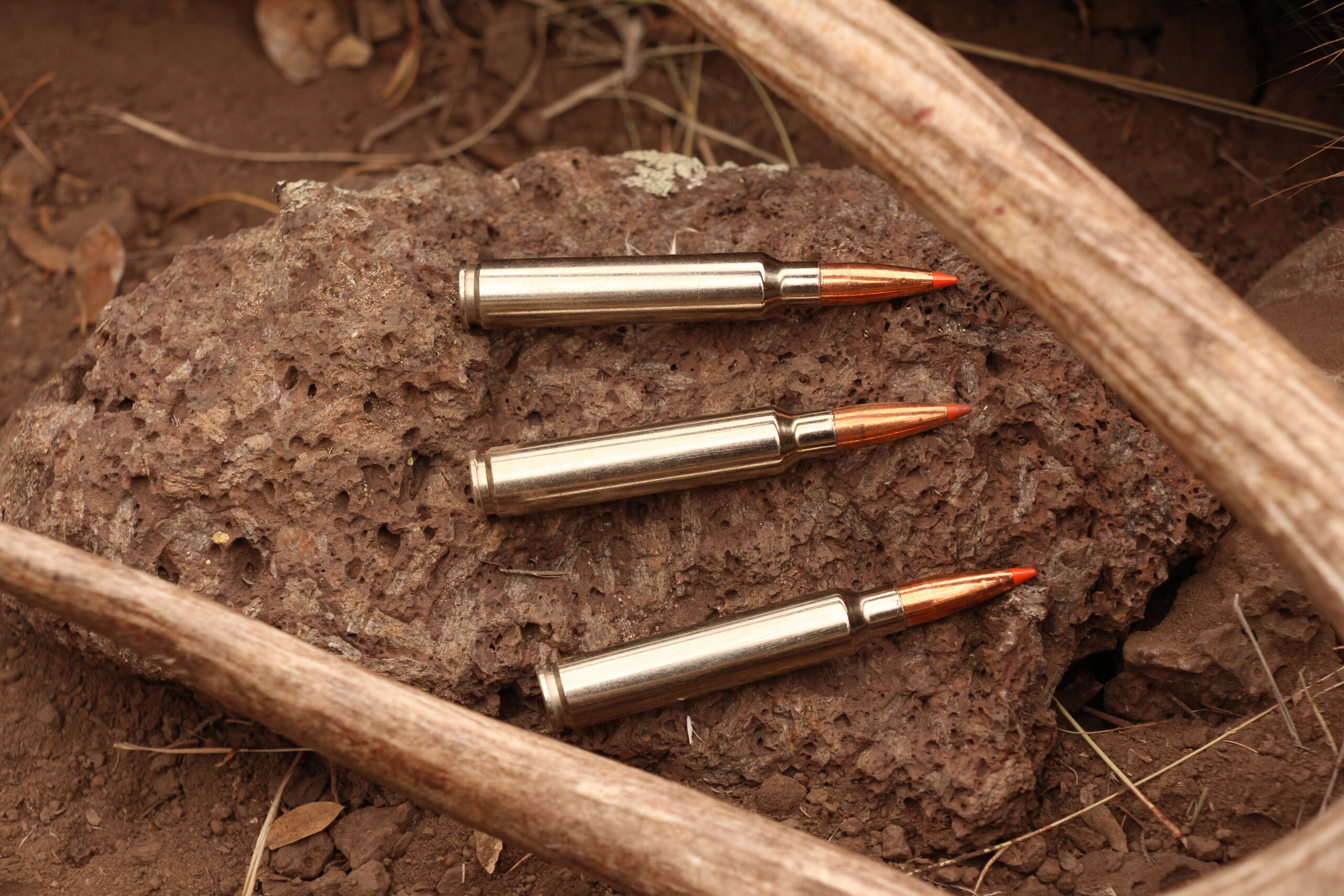
Federal Premium is loading five bullets into the new 7mm Backcountry, although that number is expected to grow. They are 155- and 170-grain Federal Premium Terminal Ascent, 195-grain Federal Premium Berger Elite Hunter, 168-grain Federal Premium Barnes LRX Copper and 175-grain Federal Fusion Tipped, shown here.
The company’s engineers have developed a new cartridge case that can sustain much higher case pressures than we’re used to. That means, with this new cartridge — 7mm Backcountry — you can get long-barrel speed even in a short barrel.
Suddenly, one of the biggest obstacles to adopting a suppressor — the extra length it tacks onto the barrel — is no longer an issue.
This short-barrel trend is primed to explode.
“This cartridge is a game-changer for guides and hunters like me,” said West Texas and New Mexico guide Josh Coffey. “We went with short barrels with suppressors a few years ago. We were done with pulling long barrel suppressors out of our packs in the mountains or getting in and out of trucks with them. We like our rifles light and short. Now we don’t have to give up velocity.”
On a recent mule deer hunt in New Mexico, I carried a shorter-barrel rifle with a suppressor and shot the new 7mm Backcountry ammo.
Much of the hunt consisted of driving ranch roads at High West Outfitter’s H-Y Ranch west of Silver City. I was constantly getting out of the truck with my rifle and glassing distant herds.
I was using a Gunwerks Magnus with a 20-inch barrel and 5 ½-inch Silencer Central Banish Backcountry suppressor. In total, the rifle was 44 ½ inches long from recoil pad to the tip of the suppressor. It was a very manageable package.
Right away, I noticed how much better a shorter barrel and suppressor was when sliding in and out of the truck without clanking anything or breaking a window. I was hooked on the short barrel.
Federal Premium loads five types of bullets into this new premium-quality, alloy-steel cartridge. John Geiger, SAFARI Magazine managing editor, used 7mm Backcountry with a 175-grain Fusion Tipped bullet to stop this deer in its tracks during a recent hunt in New Mexico.
At the range, before the hunt, I shot sub-MOA groups at 100 yards from the bench and from the bipod. I used the Revic ballistic app to set my distances and trued my info at 300 yards. With a Garmin Xero C1 Pro chronograph, I got three-shot velocities of 2,966, 2,963 and 2,968 fps using Federal Fusion Tipped bullets. In addition to that bullet, Federal is also loading super-fast 155- and 170-grain Federal Premium Terminal Ascent, 195-grain Federal Premium Berger Elite Hunter and 168-grain Federal Premium Barnes LRX Copper bullets.
The Revic elevation turret was inscribed with MOA clicks. With the ballistic app, I could enter the distance, make a wind call and be on target beyond 600 yards. I was not planning on shooting at an animal at that distance, but I knew my setup and was capable of doing so. I had shot MOA groups out to 1,200 yards with a Magnus in the past, so my confidence was high.
The turret also had a built-in Plan B.
If I chose, I could instead dial to the yardage — rather than MOA — for a quicker shot. The custom turret was engraved with yardage stops specifically for this rifle and bullet. I tested the yardage turret as well as the MOA elevation turret out to 500 yards. They were both highly accurate.
The eventual shot at the mature mule deer on Day 3 was a quick setup. It was not a rushed shot but a shot that had to be taken within a short window of time. The buck was feeding and moving up a hill, getting farther away. It was about to crest the summit, be sky-lined and then out of sight.
Coffey gave me the distance and a wind call. With the big deer on the move, I chose to dial to the yardage rather than check the app for a MOA setting. I pulled the trigger during my respiratory pause. At 460 yards, the shot was right on. The big muley stopped in his tracks, looked up to heaven and tumbled 20 yards back down the hill where he lay dead. The bullet had pushed through the quartering-away deer from the back of the left lung through the front of the right lung.
After the shot, I wondered if I would have had the time to input the yardage on the app, get behind the scope, get a wind call and fire before this trophy was gone. Maybe, but it was nice to have that yardage option at hand.
We travel many miles for our hunts, practice at the range, get the best gear we can and hunt hard in all kinds of weather for a shot at a game animal. Hunting can be a very technical pursuit if we let it.
I watched the downed deer in the scope more than a quarter mile away. Emotion, buried away during several days of non-stop hunting, suddenly hit me hard in the form of gratitude. The sky then seemed bluer. The mountains felt closer, the wind fresher, and life felt much fuller. I turned to look at my guide, who, like a rock, had walked with me through this process from Day 1.
“Thank you,” I said.
“You bet,” said Coffey. “Nice shot.”
We sat there for a few minutes. Saying nothing because nothing needed to be said.
What other adventure besides hunting creates friendships and forges mutual respect so quickly? I’ve yet to find it.
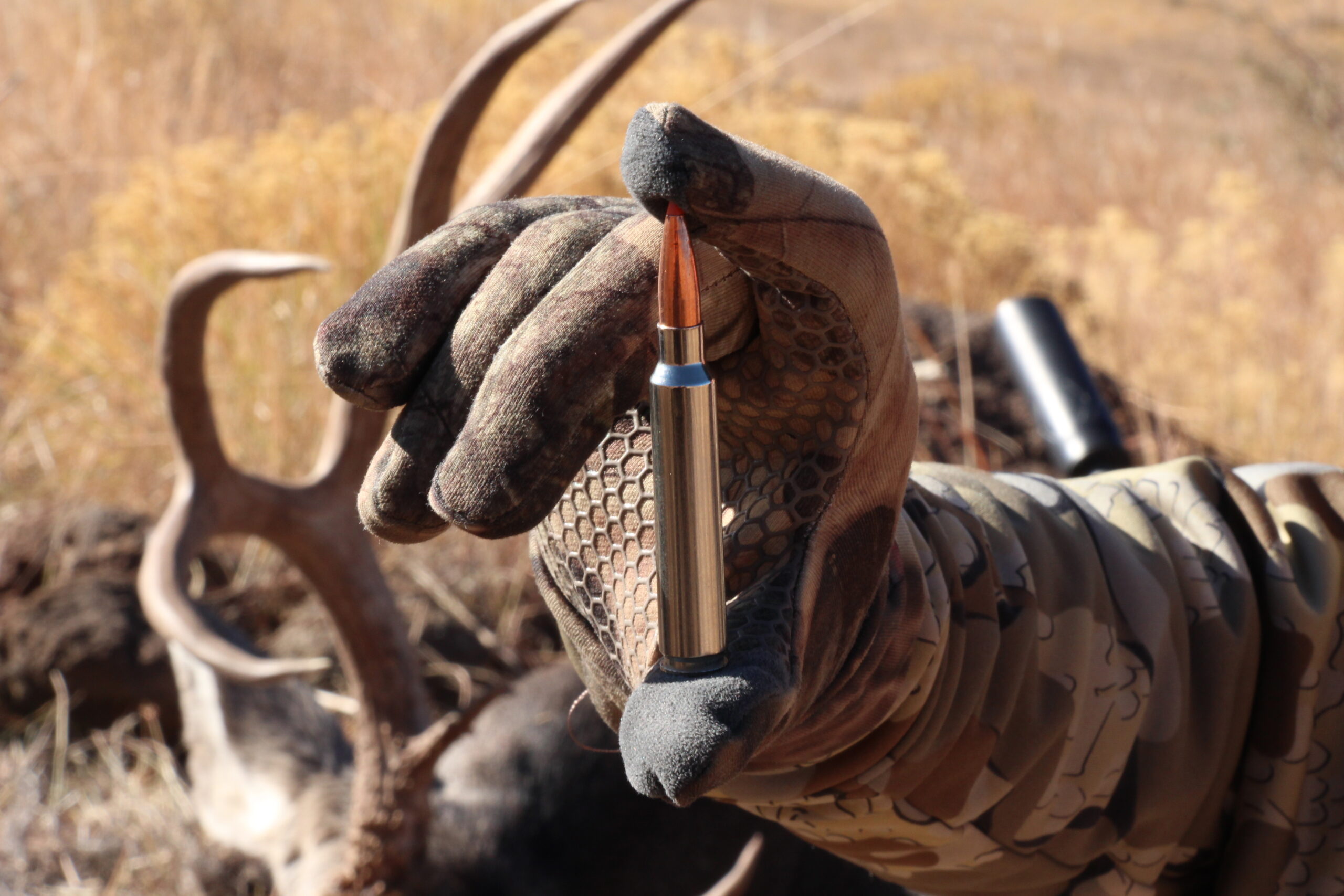
Federal Premium’s new 7mm Backcountry is designed for hunters who want to shoot suppressed with short barrels at high velocities. Gunwerks is chambering its Magnus in 7mm Backcountry. The shorter 20-inch barrel paired perfectly with a Silencer Central Banish Backcountry and Revic scope.
SECRET SAUCE
It’s not the bullet that gives this package such a boost in speed. And it’s not a new propellant mix. Instead, it’s the actual material that Federal uses to make the cartridge hull itself.
This 7mm Backcountry cartridge is a result of seven years of development.
In 2017, the U.S. military came to the company because it wanted better ammo performance.
“We tested many materials at higher pressures,” said Federal engineer Brad Abramowski.
Abramowski’s team landed on a very specific, patented steel alloy. Wait, Steel? Shooters the world over are all too familiar with common steel cases. They’re made to be cheap, throwaway-range ammo. They corrode and often can’t be reloaded.
“This alloy is very different,” said Abramowski.
It’s patented, so they’re not giving away the formula, but they call it Peak Alloy and it’s more closely related to the types used in bank safes, race cars and nuclear reactors.
This alloy allows Federal to safely increase cartridge pressures, boosting velocities to magnum levels through a shorter barrel without more recoil.
Brass is usually loaded to a ceiling of 65,000 psi. Peak Alloy is safely loaded to 80,000 psi. In practical terms, that translates into 3,000 fps velocities with a 170-grain bullet out of the 20-inch barrel. During our hunt, another hunter had a custom Horizon rifle with a very short 16.25-inch barrel that shot an impressive 2,880 fps.

John Radzwilla of Hook & Barrel magazine used a 16.25-inch barreled Horizon rifle in 7mm Backcountry to take this old mule deer on a hunt in New Mexico recently. The short-barreled rifle sent a 175-grain Fusion Tipped bullet at 2,880 fps.
7mm PRC and MAGNIFICENT 7s
Of all the hunting calibers out there, Federal picked 7mm for its new cartridge.
“Choosing 7mm made the most sense compared to other calibers,” said Mike Holm, Federal’s director of centerfire ammo.
Hunters know that the 7mm, .284-inch bullets hit a sweet spot of higher ballistic coefficients compared to the 30’s or 6.5’s. There are many proven 7mm bullets on the market that are heavy for caliber with excellent BCs.
And in the 7mm-caliber world, it’s no secret that now, one in particular is king: 7mm PRC.
“We set out to beat it, and we did that,” said Holm. “Due to its safe higher-chamber-pressures, a 7mm Backcountry 170-grain Terminal Ascent shot through a 24-inch barrel gives you a muzzle velocity of around 3,150 fps. A 7mm PRC with the same bullet generates about 2,950 fps. Through a 20-inch barrel, 7mm Backcountry shoots approximately 3,000 fps while the 7mm PRC is only 2,850 fps.”
You might expect the recoil to jump up along with the velocity. But the higher pressures promote a better burn, mitigating the kick.
The jury is out on reloading for now. While steel is not as malleable as brass, these cartridges can still be reloaded several times, said Abramowski.
The new cartridges are available now, so we’ll soon hear if the case is a hit with the do-it-yourself reload crowd.
Meanwhile, hunters can use factory ammo long on speed with their suppressed, short-barrel rifles.

Hunters and guides were strangers just a few days ago. From left, hunter J.J. Reich of Federal Premium, author John Geiger, engineer Brad Abramowski and guide Josh Coffey enjoy each other’s company and check out the unique characteristics of the deer’s rack.
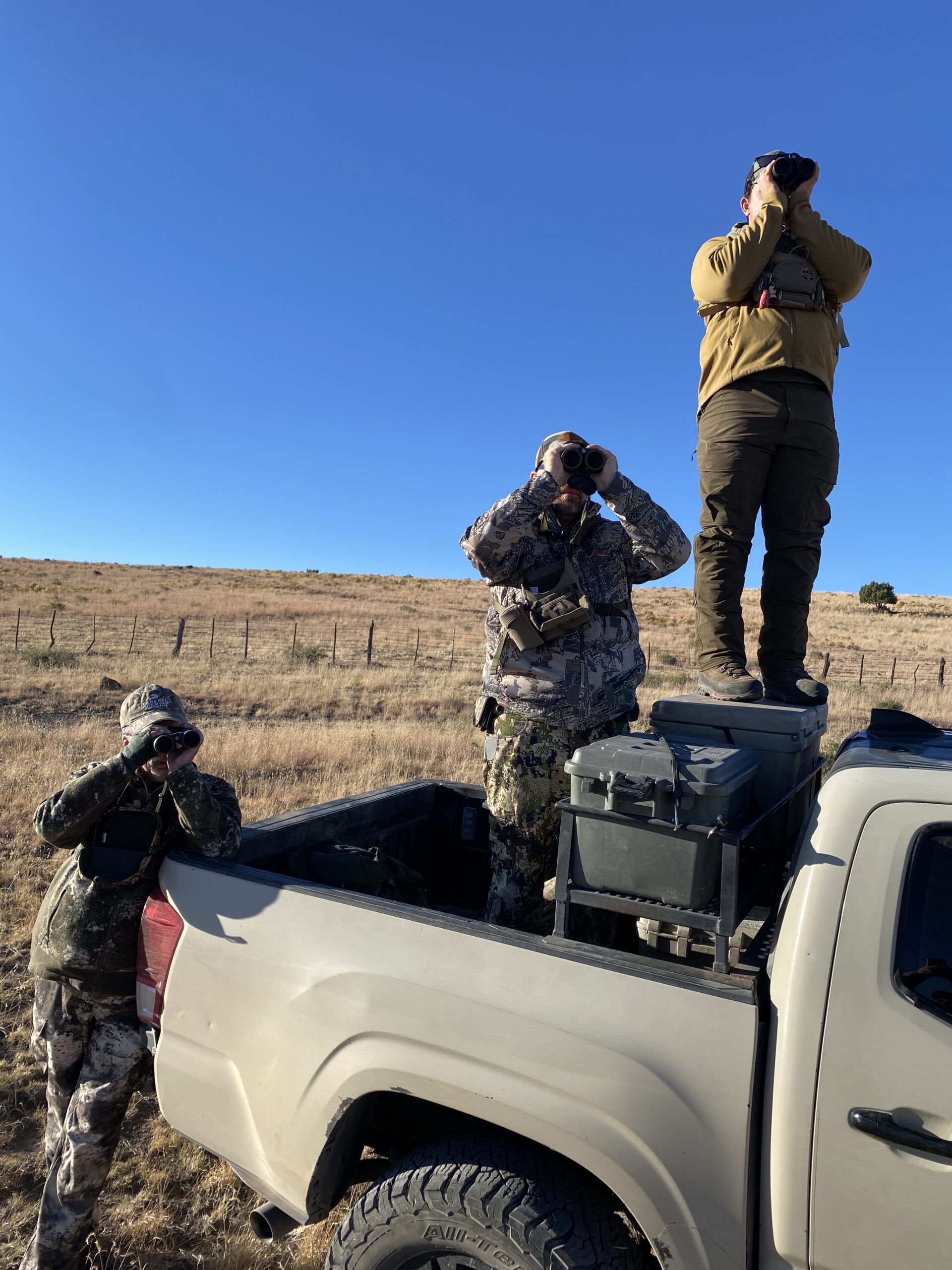
To cover the immense High West Outfitter ranch in southwestern New Mexico, hunters were constantly getting in and out of a Tacoma to glass far-off herds of mule deer in search of mature bucks of a certain age class. In the past, they would have had long barrels and a long suppressor. Now, they had a maximum of 20-inch barrels with 5 1/2-inch-long Silencer Central Banish suppressors.
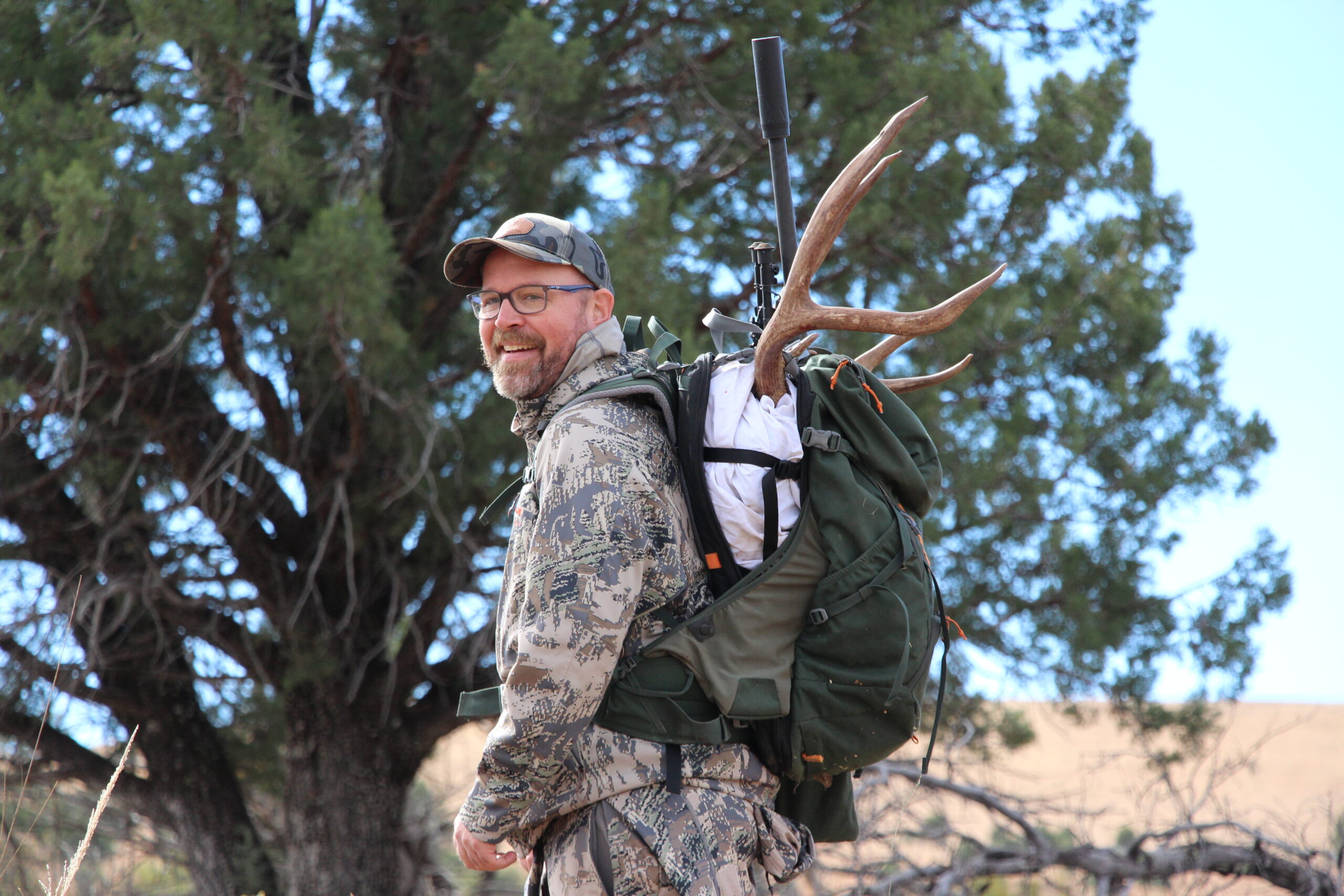
Packing out a mule deer with a shorter-barreled rifle is a dream: you’re not catching the muzzle on trees, and the rifle doesn’t stick out of the gun pocket awkwardly.
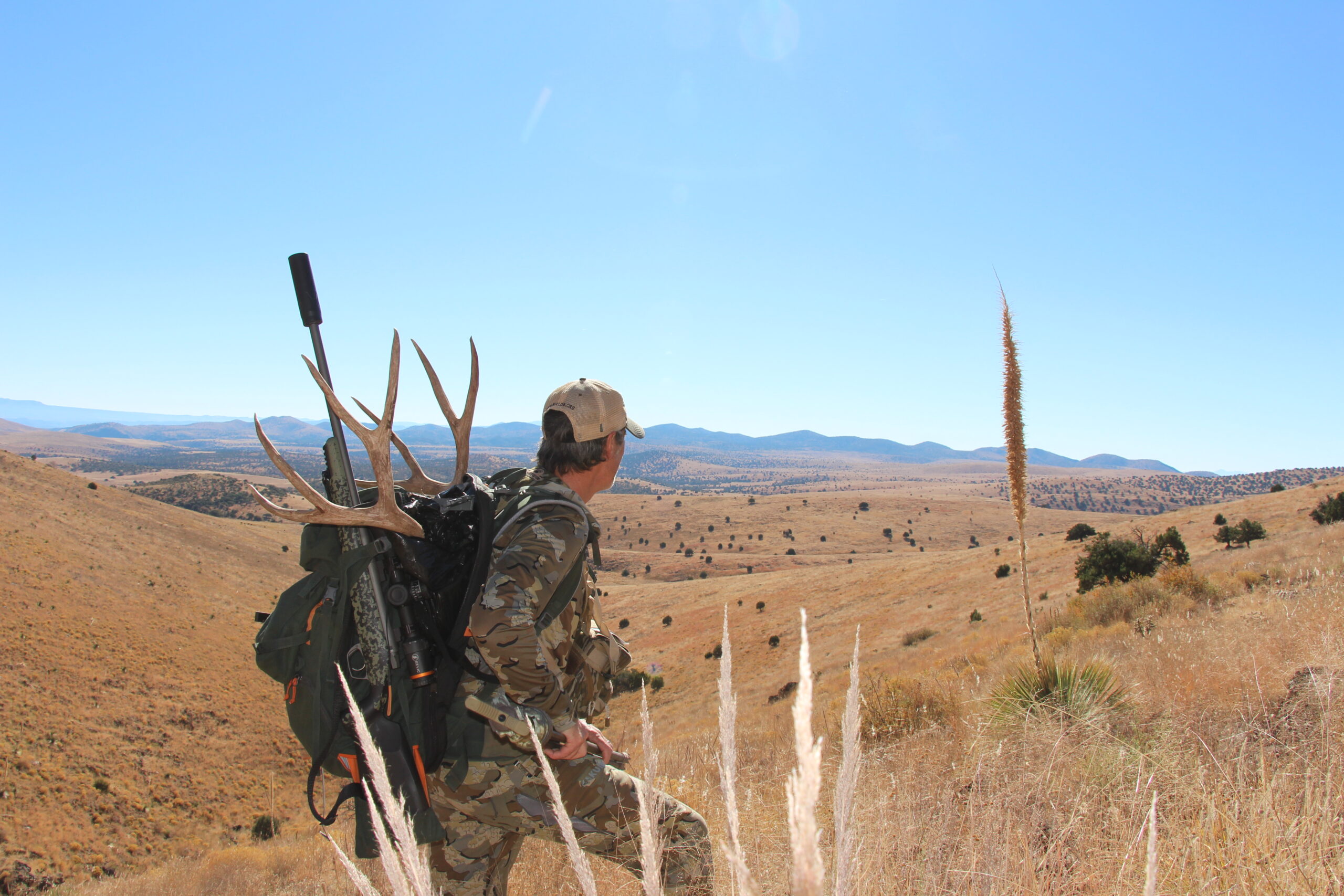
Author John Geiger looks southwest toward Arizona and Mexico as he packs out a mule deer from the foothills of the Gila Mountains near Silver City, New Mexico.

Horned lizards, also called horntoads, are common in this part of the country. Their excellent camouflage is their best defense.

High West Outfitters hunts many ranches around the U.S. Southwest, including H-Y in the heart of the Gilas.

Federal Premium’s new 7mm Backcountry is designed for hunters who want to shoot suppressed with short barrels at high velocities. Gunwerks is chambering its Magnus in 7mm Backcountry. The shorter 20-inch barrel paired perfectly with a Silencer Central Banish Backcountry and Revic scope.
What’s Next?
A good test of how popular a new cartridge will be is to look at how many rifle companies are investing in it and chambering for it. More than a dozen of the best companies have lined up to offer their rifles in 7mm Backcountry in 2025 and beyond. That’s a very good sign. Here are just a few.
Christensen Arms
Gunwerks
Seekins Precision
Fierce Arms
AllTerra Arms
Savage Arms
Weatherby
Geissele Automatics
Proof Research
Horizon Firearms
Pure Precision

